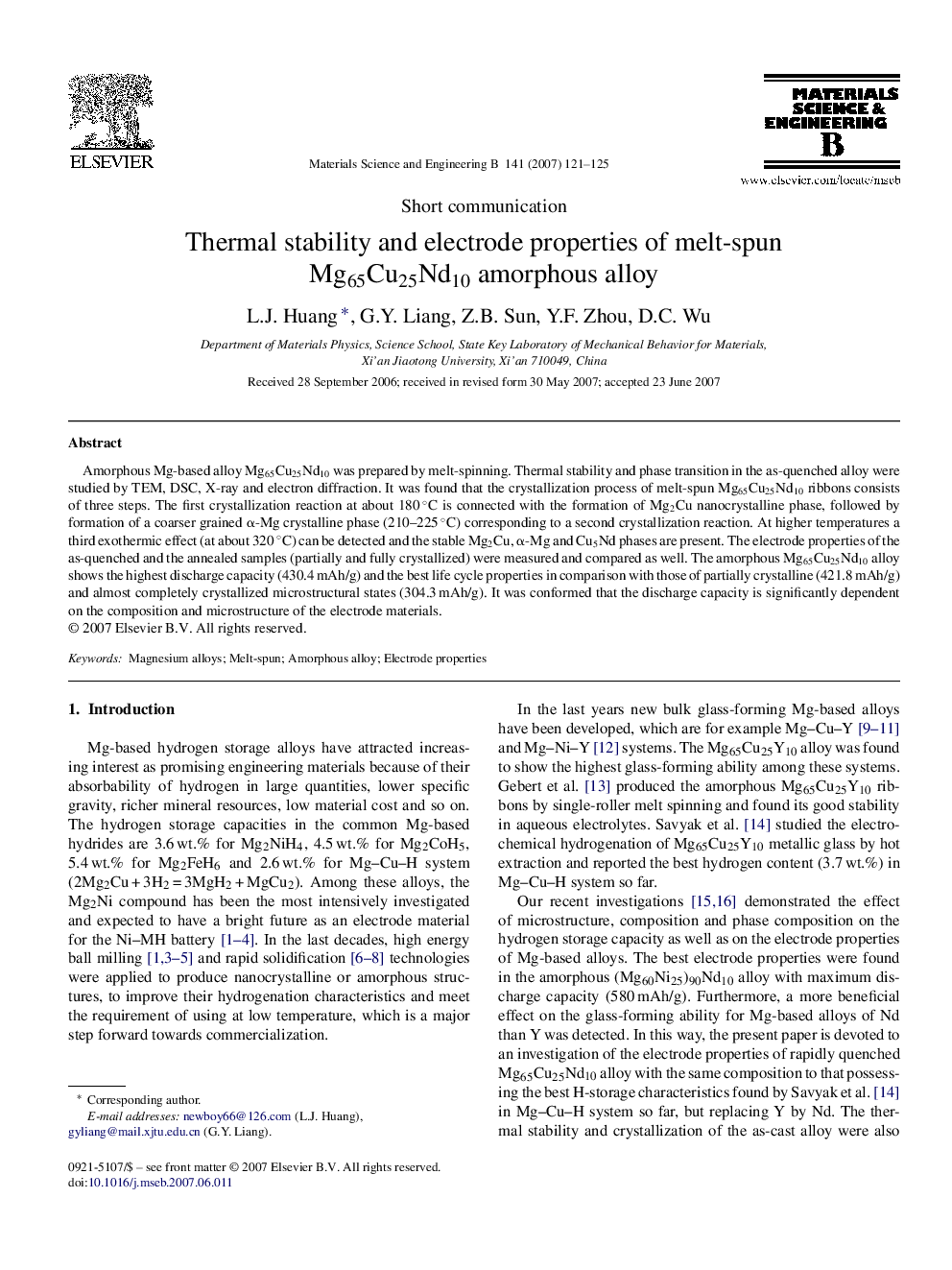| Article ID | Journal | Published Year | Pages | File Type |
|---|---|---|---|---|
| 1531320 | Materials Science and Engineering: B | 2007 | 5 Pages |
Abstract
Amorphous Mg-based alloy Mg65Cu25Nd10 was prepared by melt-spinning. Thermal stability and phase transition in the as-quenched alloy were studied by TEM, DSC, X-ray and electron diffraction. It was found that the crystallization process of melt-spun Mg65Cu25Nd10 ribbons consists of three steps. The first crystallization reaction at about 180 °C is connected with the formation of Mg2Cu nanocrystalline phase, followed by formation of a coarser grained α-Mg crystalline phase (210-225 °C) corresponding to a second crystallization reaction. At higher temperatures a third exothermic effect (at about 320 °C) can be detected and the stable Mg2Cu, α-Mg and Cu5Nd phases are present. The electrode properties of the as-quenched and the annealed samples (partially and fully crystallized) were measured and compared as well. The amorphous Mg65Cu25Nd10 alloy shows the highest discharge capacity (430.4 mAh/g) and the best life cycle properties in comparison with those of partially crystalline (421.8 mAh/g) and almost completely crystallized microstructural states (304.3 mAh/g). It was conformed that the discharge capacity is significantly dependent on the composition and microstructure of the electrode materials.
Related Topics
Physical Sciences and Engineering
Materials Science
Electronic, Optical and Magnetic Materials
Authors
L.J. Huang, G.Y. Liang, Z.B. Sun, Y.F. Zhou, D.C. Wu,
